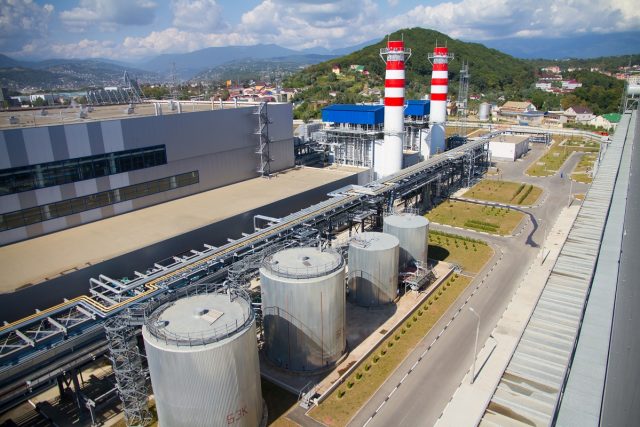For a species that spent the last century drilling the earth for oil and gas, humanity has only begun to scratch the surface of another immense resource beneath our feet: geothermal heat. Geothermal energy – literally “earth heat” – is the thermal energy stored in the Earth’s crust. It has warmed hot springs used since ancient times, yet today it accounts for less than 1% of global electricity generation. That forgetfulness may be about to change.
Advances in drilling and energy tech are unlocking geothermal resources in places once deemed impossible, spurring talk of a geothermal renaissance akin to past energy revolutions. Think of the Texas oil boom of the early 1900s or the fracking shale gale of the 2010s – only this time the gushers are clean, hot water and steam.
On paper, geothermal energy has incredible potential. The heat flowing continuously from Earth’s interior is estimated around 40,000 gigawatts, over twice the world’s total energy consumption. In some geologically blessed places, geothermal already plays a big role – Kenya gets about 45% of its electricity from geothermal plants, and Iceland uses geothermal to heat 85% of its homes. Yet most countries, including the United States, have barely begun to exploit this resource.
Why? Until recently, high up-front costs and geographic limits kept geothermal in a niche. A typical geothermal power project has required about $8.7 million per megawatt to develop, versus roughly $1.8 million/MW for a wind farm. Furthermore, conventional geothermal plants were feasible only in areas with easy-to-tap reservoirs of steam or hot water – essentially, you had to “be lucky” in your geology.
But new technologies and government support are rapidly eroding these barriers. Enhanced drilling techniques, improved modeling, and federal investment are slashing costs and expanding where geothermal can be developed. The U.S. Department of Energy (DOE) now projects U.S. geothermal capacity (currently just under 4 GW) could surge to at least 90 GW by 2050. That’s an ambitious 20-fold increase that would make geothermal a major player in the clean energy mix.
This report provides a deep dive into geothermal energy, with a focus on developments and commercialization efforts in the United States. We’ll start with an overview of what geothermal energy is, how it works, and its pros and cons. Then, we’ll explore its applications in industry – potentially a game-changer for U.S. manufacturing and heavy industries seeking clean heat. We’ll profile key U.S. companies (especially innovative startups) driving geothermal forward, and examine how government initiatives and Department of Energy programs are supporting this push.
Next, we’ll discuss market trends, recent breakthroughs, and pilot projects that are signaling geothermal’s rising momentum. Finally, we’ll zoom in on a publicly traded U.S. geothermal company to see how this burgeoning sector translates into real projects, revenues, and investment potential.
Geothermal Energy 101: How It Works and Where It’s Found
At its core, geothermal energy is heat from the Earth’s interior. The Earth’s core is about as hot as the sun’s surface (~10,800°F), and this heat continuously flows outward, warming rock and water beneath the surface. In certain areas, that heat naturally manifests at the surface as hot springs, geysers, or volcanic activity – hints at the vast thermal reservoir below.
Geothermal power plants tap into this heat by drilling wells into hot underground reservoirs of water or steam. Wells bring the hot fluid to the surface to drive turbines and generate electricity. Afterward, the cooled water is often injected back underground to sustain the reservoir. In essence, a geothermal plant operates on a similar principle as a conventional steam power plant – except the heat source is the Earth’s subsurface instead of burning coal or gas.
Types of Geothermal Plants:
- Dry Steam Plants: Use steam directly from underground to spin turbines.
- Flash Steam Plants: Bring hot water under pressure to the surface and “flash” it into steam.
- Binary Cycle Plants: Use geothermal water to heat a secondary fluid with a lower boiling point. The vapor from this fluid spins the turbine, making the system closed-loop and nearly emission-free.
Binary plants are now the most common in the U.S. because they can operate in moderate-temperature areas and emit virtually no gases. The geothermal fluid never touches the air and is fully reinjected into the ground.
Geographic Distribution in the U.S.
Traditional geothermal systems require naturally occurring heat, water, and porous rock close to the surface. In the U.S., this geological jackpot exists mostly in the West: California, Nevada, Utah, Oregon, Idaho, and parts of Alaska and Hawaii. California’s Geysers field is one of the largest geothermal complexes in the world and has been producing power since 1960.
However, most of the country doesn’t have these natural conditions – which is why geothermal has remained a niche source of energy. That’s changing.
Enhanced Geothermal Systems (EGS) are designed to create artificial geothermal reservoirs. Using horizontal drilling and hydraulic stimulation, engineers fracture hot, dry rock deep underground to allow water to circulate and absorb heat. The result? Viable geothermal production in regions that previously lacked it. EGS is sometimes called “fracking for heat” and could unlock geothermal energy nearly anywhere on Earth.
A Department of Energy initiative called “Geothermal Everywhere” aims to commercialize EGS to allow scalable geothermal power generation across all 50 states.
Advantages of Geothermal Energy
Let’s explore what makes geothermal uniquely valuable in the renewable energy mix:
1. Always-On, Baseload Power
Geothermal provides constant power, day or night, regardless of weather. It runs at a capacity factor of 90% or higher – better than solar, wind, coal, and even some nuclear plants. That makes geothermal a stable “backbone” energy source for modern electric grids.
2. Clean and Low-Carbon
Geothermal energy emits virtually no greenhouse gases. Life-cycle carbon emissions are 90–95% lower than coal or gas. Binary plants have zero air emissions since the fluid is never released.
3. Domestic and Secure
Geothermal is American-made. The “fuel” is underground heat, so there’s no reliance on foreign energy or supply chains. Once a geothermal plant is built, it faces no commodity price volatility.
4. Small Land Footprint
Geothermal plants use significantly less land than wind or solar farms. No large turbines or sprawling panel arrays – just a few well pads and a small power station. The facilities are quiet and low-profile.
5. Multiple Revenue Streams
Geothermal plants can do more than generate electricity. The hot fluid can also be used for:
- District heating
- Industrial processes
- Agricultural applications (greenhouses, aquaculture)
- Mineral extraction (e.g., lithium, zinc, silica)
Some geothermal sites even produce power and extract valuable minerals like lithium from the same fluid, creating dual revenue streams.
6. Longevity and Low Operating Cost
Geothermal reservoirs can last decades with proper management. Once built, the plants are cheap to run. There’s no ongoing fuel cost, just maintenance and reinjection operations.
Geothermal in U.S. Industry: Clean Heat for Heavy Demand
Geothermal energy isn’t just about producing electricity — it’s also a powerful source of industrial heat, which represents about 20% of global carbon emissions. Many industrial processes require steady heat or steam to operate, and most of that demand is currently met by burning fossil fuels like coal and natural gas.
Geothermal offers an alternative — a clean, continuous, and local source of heat that can power U.S. factories, food processors, chemical plants, and more.
Industrial Uses of Geothermal Heat
1. Process Steam
Many industries rely on low- to medium-temperature steam (150°C–250°C) for tasks like sterilizing, pasteurizing, drying, or melting. Geothermal wells can deliver steam or hot water directly to replace fossil-fuel boilers.
2. Food Processing & Agriculture
In Nevada, geothermal heat is used to dry garlic and onions. In Idaho, geothermal greenhouses produce tomatoes and tropical plants year-round. Other applications include pasteurizing milk, brewing beer, and sterilizing equipment.
3. District Heating
Cities like Boise, Idaho, run geothermal district heating systems — using underground hot water to warm hospitals, schools, and downtown buildings. This could expand to campuses, military bases, and even entire neighborhoods.
4. Aquaculture & Greenhouses
Geothermal systems are used to warm water for fish farms and to heat greenhouses in colder climates. It’s a sustainable way to grow food year-round.
5. Industrial Decarbonization
If enhanced geothermal becomes widely available, it could decarbonize large swaths of U.S. industry by supplying process heat in the Midwest and Gulf Coast — regions not traditionally known for geothermal.
U.S. Startups Driving the Geothermal Revolution
This section profiles key U.S.-based geothermal startups — many funded by top venture capital firms and backed by Big Tech and energy giants alike.
Fervo Energy
- Location: Houston, TX
- Founded: 2017
- Funding: ~$900M+
- Focus: Enhanced Geothermal Systems (EGS) using horizontal drilling and fiber-optic reservoir monitoring.
- Milestone: Successfully generated 3.5 MW from an engineered reservoir in Nevada.
- Next: Building a 400 MW project in Utah, backed by Google and Southern California Edison.
Fervo is widely seen as the “fracking for heat” leader — using techniques from the oil & gas industry to make geothermal scalable and profitable anywhere hot rock exists.
Quaise Energy
- Location: Boston, MA (MIT spinout)
- Founded: 2018
- Funding: ~$91M
- Focus: Super-deep geothermal drilling using millimeter-wave energy (microwave beam) to melt rock instead of drilling.
- Goal: Reach 20 km depth to access 500°C “superhot rock” for ultra-high-density geothermal.
- Vision: Make geothermal viable anywhere on Earth.
If successful, Quaise could unlock supercritical steam — an ultra-dense energy source that could replace coal and gas plants.
Eavor Technologies (Canada-based, active in U.S.)
- Technology: Closed-loop geothermal (Eavor-Loop™) — circulates fluid through sealed pipes in hot rock.
- No Fracking: Doesn’t require fluid injection or fractures, so can be deployed in stable geology.
- Backers: BP, Chevron, Temasek.
- U.S. Projects: Planning expansion in Nevada and Western U.S.
Eavor’s closed-loop systems are modular and can be replicated across diverse geologies.
Sage Geosystems
- Location: Houston, TX
- Founded: 2020
- Focus: Geothermal + energy storage
- Technology: Inject water into rock to store pressure; release for power on demand.
- Partnership: Meta (Facebook) is backing a 150 MW geothermal/storage hybrid for data centers.
This is geothermal as a “battery” — store energy underground and dispatch when needed.
Zanskar Geothermal
- Focus: AI-driven geothermal site exploration
- Approach: Uses satellite and geological data to find high-potential geothermal zones.
- Why it matters: Reduces “dry well” risk, slashes development costs, and accelerates project timelines.
Zanskar is the digital prospecting company of geothermal, helping others avoid expensive guesswork.
Other Notable Players
- GreenFire Energy: Retrofits old geothermal wells with closed-loop systems.
- XGS Energy: Developing solid-state heat exchange systems.
- Dandelion Energy: Alphabet (Google) spinout focused on residential geothermal heating.
- Controlled Thermal Resources (CTR): Building geothermal + lithium extraction plant at California’s Salton Sea. Partnered with GM.
U.S. Government Support for Geothermal Energy
The U.S. Department of Energy (DOE) has become a major force behind geothermal development. Federal programs, funding initiatives, and permitting reforms are helping geothermal move from niche to mainstream.
DOE’s “Enhanced Geothermal Shot”
- Goal: Reduce the cost of Enhanced Geothermal Systems (EGS) by 90% by 2035
- Target Price: $45 per megawatt-hour (making geothermal as cheap as wind or solar)
- Approach: Invest in faster drilling, better rock fracturing, and real-time subsurface monitoring
This initiative is modeled after the “SunShot” program, which helped make solar energy price-competitive.
Utah FORGE: The Government’s EGS Testbed
- Located in Milford, Utah
- DOE-funded site to test advanced geothermal drilling and stimulation
- Two deep wells drilled into hot granite
- Real-world tests of flow, heat, and long-term performance
FORGE is doing for geothermal what test sites did for fracking: proving the tech works at scale and can be replicated.
Federal Investment & Grants
Recent legislation includes:
- Infrastructure Investment & Jobs Act (2021)
- Inflation Reduction Act (2022)
- Offers 30–40% Investment Tax Credits (ITC) or a Production Tax Credit (PTC) worth up to 2.6 cents/kWh
- Applies equally to geothermal, solar, and wind
- DOE Pilot Funding Programs
- Up to $74 million for multiple EGS demonstration projects
- Additional grants for minewater geothermal, lithium recovery, and energy storage hybrids
This level of support mirrors the early days of the solar and wind industries — laying the foundation for a geothermal boom.
Major Breakthroughs in U.S. Geothermal
Several landmark projects and pilot demonstrations have changed the outlook for geothermal energy.
1. Fervo Energy’s Nevada EGS Success (2023)
- Delivered 3.5 MW of sustained electricity from an engineered geothermal well
- Used horizontal drilling and fiber-optic monitoring
- Validated that EGS can produce competitive, stable power
This is considered the first truly commercial EGS power output in the U.S.
2. Closed-Loop System Demos
- Eavor: Proved its Eavor-Loop™ circulates fluid naturally without pumps
- GreenFire Energy: Revived an unproductive geothermal well in California using a closed-loop insert
- Result: Zero emissions, no fracking, minimal seismic risk
Closed-loop systems could dramatically expand geothermal’s reach.
3. Geothermal + Lithium Projects at Salton Sea
- Controlled Thermal Resources (CTR) is building a geothermal power plant that also extracts lithium
- Partnered with General Motors to supply U.S.-made lithium for EV batteries
- Adds a second revenue stream to geothermal power
These dual-purpose projects make geothermal more profitable and strategically important.
4. Geothermal for Energy Storage
- Sage Geosystems successfully tested “water battery” storage in Texas
- Injected water underground during low demand, released it to generate electricity during peak hours
- Combines long-duration storage with clean baseload power
This could be a huge advantage in a renewable-heavy grid.
Big Tech, Big Oil & Big Investment
Geothermal is attracting serious interest from major corporate players:
Big Tech
- Google: Partnered with Fervo to power data centers with 24/7 carbon-free geothermal electricity
- Meta (Facebook): Contracted Sage Geosystems to provide geothermal energy + storage
- Microsoft: Exploring geothermal to power its campus microgrids
Why? Data centers need around-the-clock clean power — and geothermal is one of the few sources that can deliver it.
Big Oil
- Chevron, BP: Early investors in Eavor’s closed-loop technology
- Baker Hughes, Halliburton: Launching geothermal drilling services
- “Wells2Watts” Program: Re-purposing old oil wells for geothermal energy
- Petrotherm: A Texas-based startup drilling geothermal wells in former oil fields
Geothermal lets oil companies use existing rigs, crews, and well pads — offering them a clean energy pivot.
Venture Capital & Private Equity
- Over $1.5 billion in venture funding flowed into geothermal startups between 2021–2024
- Top investors include Breakthrough Energy Ventures, Helmerich & Payne, Prelude Ventures, and Capricorn Investment Group
This surge in funding mirrors early-stage clean tech and is creating a new geothermal ecosystem.
Momentum in the Market
- More than 60 new geothermal projects are in development in the U.S.
- DOE projections: Geothermal could power 65 million U.S. homes by 2050
- Estimated global geothermal market: Expected to more than double to $14 billion by 2034
- Potential for $100B+ in annual investment worldwide if EGS scales
This is not a slow trickle. It’s the beginning of a land-rush — not for oil, but for heat.
Our #1 Geothermal Energy Stock: Ormat Technologies (NYSE: ORA)
For investors looking for a pure-play geothermal stock, one company stands above the rest:
Ormat Technologies, Inc.
Ticker: ORA (NYSE)
Headquarters: Reno, Nevada
Founded: 1965
Market Cap: ~$5 billion
Specialty: Geothermal power generation, equipment manufacturing, and energy storage
Ormat is the largest and most established geothermal company in the United States, with a strong global footprint. It operates over 1.5 gigawatts of power generation assets — the majority from geothermal — and sells electricity under long-term contracts to utilities and corporate buyers.
Ormat’s Business Model
Ormat is vertically integrated across three segments:
- Electricity:
- Owns and operates geothermal plants
- Sells electricity to utilities via long-term power purchase agreements (PPAs)
- Product Sales:
- Manufactures geothermal turbines and binary cycle systems
- Supplies technology to third-party geothermal developers worldwide
- Energy Storage:
- Deploys utility-scale battery systems
- Integrates storage with geothermal to create flexible, 24/7 clean energy solutions
Financial Performance (2024)
- Revenue: $880 million (6% year-over-year growth)
- Net Income: $124 million
- EBITDA: $550 million
- 2025 Revenue Guidance: $925–$975 million
Ormat is consistently profitable, with long-term contracts providing reliable cash flow. While it trades at a premium valuation, the company’s steady earnings and high growth potential support investor interest.
Strategic Expansion Plans
- Targeting 2.6–2.8 GW of total capacity by 2028
- Actively developing new geothermal plants in California, Nevada, Oregon, and Hawaii
- Acquired additional plants from Enel in 2024 to expand U.S. market share
- Safe-harbored equipment to lock in tax credits through 2028
- Negotiating $100+ MWh clean power contracts with hyperscale tech firms (e.g., data centers)
Ormat is benefiting directly from federal policy — especially the enhanced Production Tax Credit and ITC under the Inflation Reduction Act.
Why Investors Like Ormat
- Stable revenues from utility contracts
- High margins in equipment sales
- Exposure to energy storage alongside geothermal
- Growth optionality if EGS and closed-loop geothermal scale
- Scarcity value as one of the only public geothermal pure-plays
As geothermal grows, Ormat is positioned like a blue-chip stock in a newly emerging sector — a leader in both operations and innovation.
Final Thoughts: Is Geothermal Energy the Next Great American Boom?
Geothermal energy is no longer a science experiment. It’s a scalable, profitable, and increasingly essential part of America’s clean energy future.
We’re witnessing the birth of a 21st-century energy boom, one that doesn’t rely on burning anything. Instead, we’re tapping into the Earth’s ancient heat — unlocking a near-infinite energy source with modern technology.
Just like the oil booms of the 1900s and the shale fracking boom of the 2010s, this geothermal renaissance is being driven by:
- Drilling innovation
- Entrepreneurial startups
- Massive government backing
- Real industrial demand
And crucially — it’s happening now.
Big Tech needs 24/7 clean energy. Heavy industry needs clean steam. The grid needs reliable baseload. And America needs energy independence. Geothermal can check all those boxes.
For investors, this is a rare opportunity to enter a transformative industry early — before it becomes crowded.
Whether through trailblazing startups like Fervo and Quaise, or stable blue-chips like Ormat, geothermal offers the kind of upside that only comes around a few times a generation.
This is clean energy with permanence. It doesn’t flicker with the wind. It doesn’t dim at night. It burns hot — always.
And it might just be the hottest investment in energy over the next decade.
















